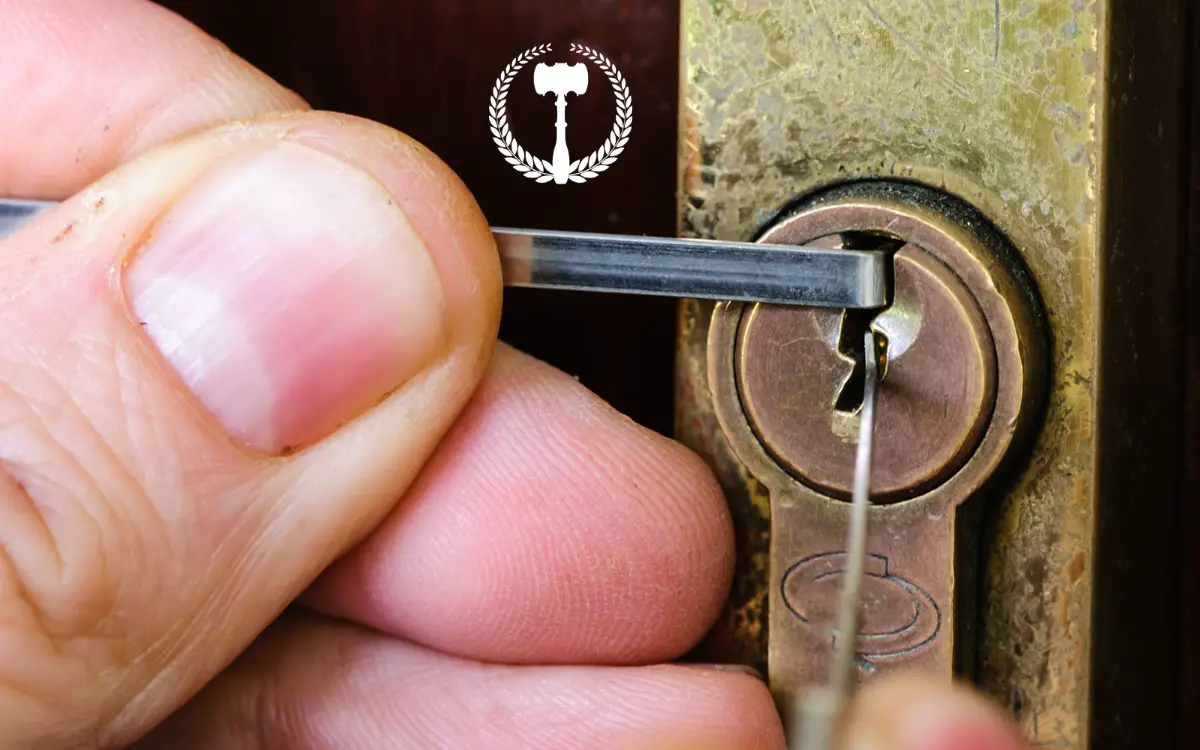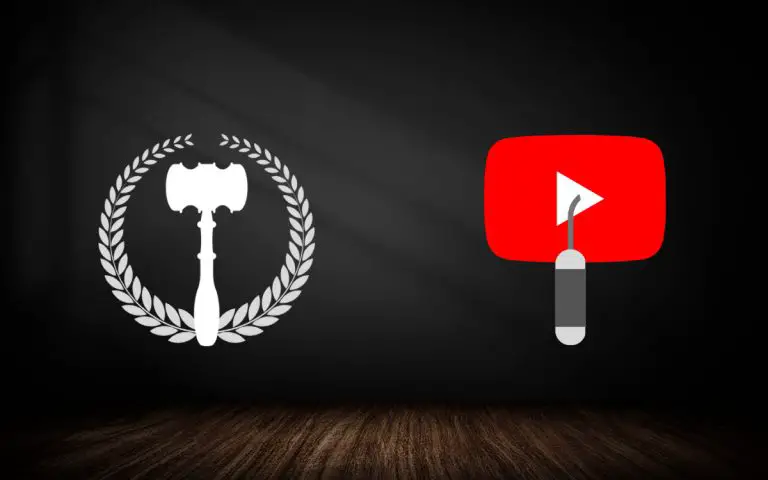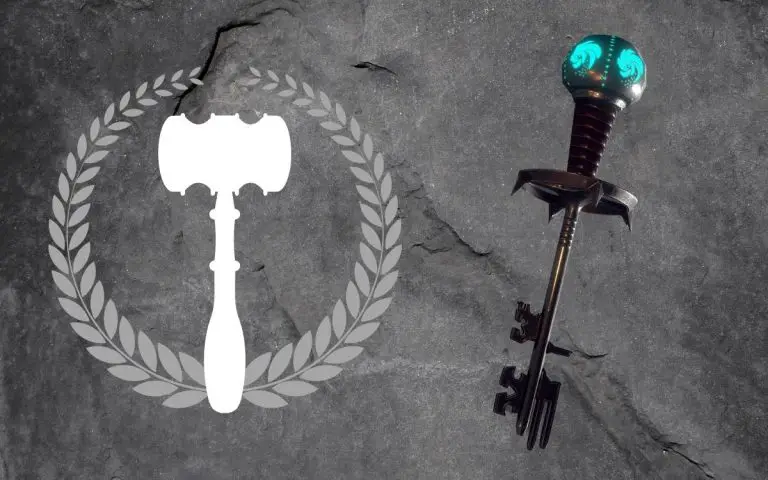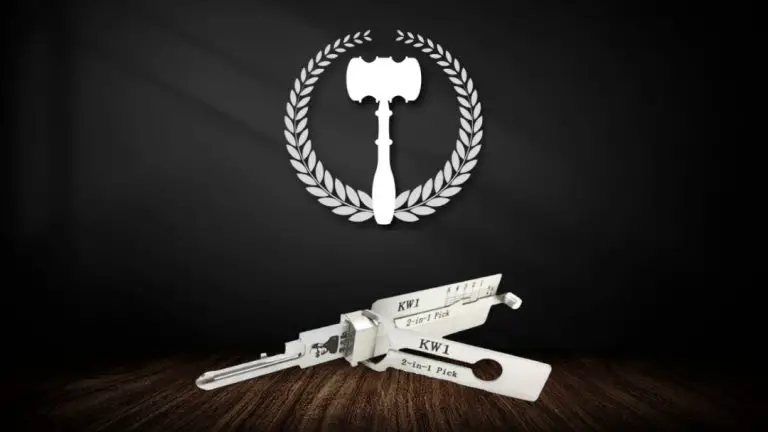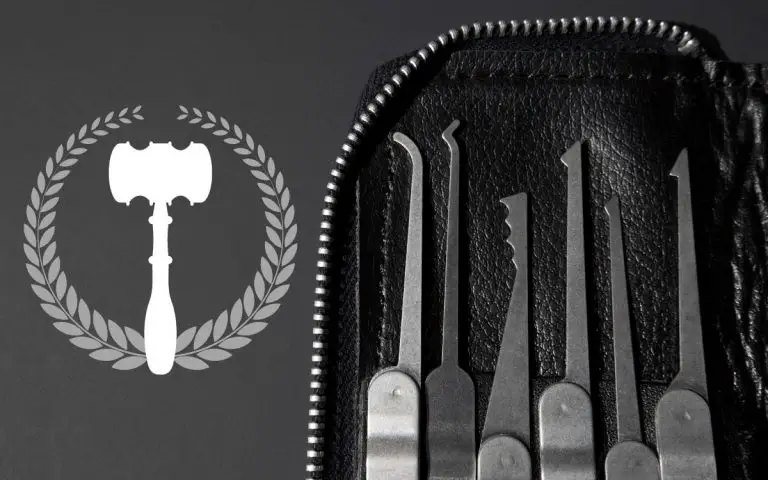Unlock Your Potential: How to Practice Lock Picking Like a Pro
Lock picking can be very temperamental but can be a skill of predictability and consistency. To reach that level, you must practice diligently.
Even the legend of lock picking, the LockPickingLawyer himself, dedicates time and constant effort to developing his skills and honing his craft.
By following this guide and practicing what we preach, you, too, can become a legend in the hobby or a highly skilled individual with the ability to stare down any lock in your path.
Should You Become a Master Lock Picker?
By becoming a master lock picker, so long as you have your tools with you, no lock will be an issue for you. These skills could save you from having a terrible day.
A few months ago, since I didn’t have the keys to a recently purchased motorcycle, I was forced to find another way in.
Thankfully, I was able to pick the lock on the motorcycle seat. Then, after opening the lock, I could remove it and use it to make a working key in place of the missing key by key impressioning a key blank.
This is just one of the scenarios these skills have saved me. Practicing has paid off for me multiple times.
Lock picking is more than just opening a lock using picks. The skills and knowledge of lock picking include the inner workings of locks, the mechanics, the history, and the vast differences between all the different kinds of locks out there.
You can also become a master lock picker through practice and study.
Side Note: Reddit Lockpicking Belt Ranking System
The Lockpicking community on Reddit has created a great ranking system for lockpickers and more importantly for us ranking locks too.
While this gives you a great way of knowing your level as a lockpicker it also gives us a great way of knowing what level of lock we are dealing with and therefore what locks we should be practicing on. We have a simplified list of locks in our article about practice locks. But you can also see the full list of locks listed by their belt ranking here.

Practice Lock Picking
Practicing without a plan won’t get you the results you want. Instead, you will waste valuable time without knowing what you are trying to learn.
By following our steps and guide below, you will have the exact outline for how to best practice lock picking.
For example, we will use someone at the low to intermediate level of lock picking. So someone who has recently gotten their yellow belt in the rankings.
How?
The key to growth and improvement is to deliberate, regular practice, and challenge your skills and abilities.
This YouTube video, which interviews Laido Dittmar, a world-class juggler who performs on prestigious circus tours, follows the same practice methodology.
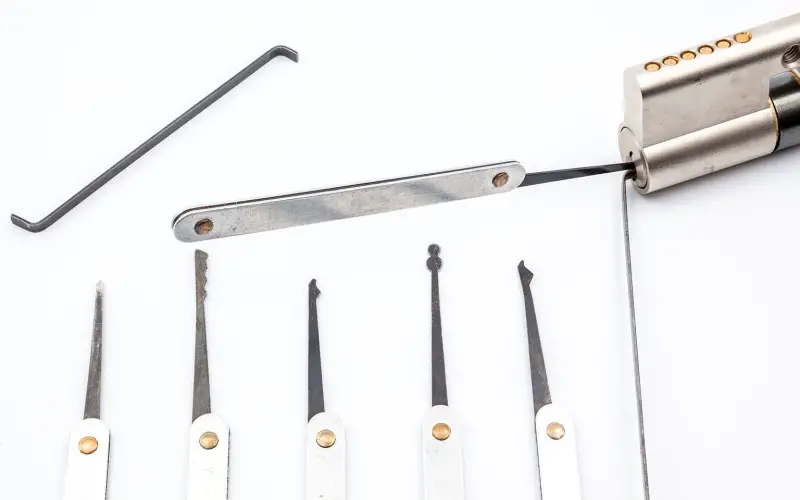
Tools
Having the right tools is critical when learning and practicing lock picking. A few basic picks and tension tools are all you would need, along with the appropriate locks.
If you want some help choosing a lock pick kit, here is our guide that will help you out.
For your first lock-picking tools, Here are the basic picks and tensioners you will need:
- Short hook
- Worm rake
- Tensioner
Tip: If you don’t have a tensioner I recommend using a windshield wiper piece. It’s free and will serve you well!
You will also need some training locks. Our recent article will guide you in finding the best practice lock options.
Finding the right training locks is essential. You want to constantly challenge yourself without getting too frustrated and quitting while reconfirming and solidifying your fundamental talents.
Schedule
A significant key to smart practice sessions is organizing your time and outlining how you will go about practicing. There are three simple stages in the practice session that we follow.
Like in many activities, the first step is warming up. Then, for a 20-minute practice session, dedicate about 5 minutes to getting back into lock picking.
We recommend using this time to organize the few tools and picks you’ll need. Having these ready and organized will allow you to use your time effectively and save you from having to run around looking for what you might need.
Set up your workspace with your tools organized and within easy reach. If you use a vice, prepare it in the optimal position and have any accessories nearby.
Grab your locks, and you are ready to go!
Practice Outline
Here is a quick outline of a 20-minute practice session for our yellow belt:
Warm Up (0 – 5 minutes): Mentally and Physically Prepare for the Task
- Get organized
- Study your locks
- Write down the number of security pins in each lock
- Types of security pins
- Review the key and biting
- Research the history of the lock
- Have a plan of attack
- Practice on the cutaway lock or acrylic lock
- Finalize your setup
Go Time (up to 15 minutes): Challenge Your Skills and Abilities
- A lock one step above your current belt ranking
- Practice good fundamentals
- Take note of what you are feeling and hearing
- Identify the pinning order as you work through the lock and pins
Cool Down (5 minutes): Reinforce Your Current Skills
- A lock at your current belt ranking
- Practice good technique
- Focus on feel
- Try different tools
- Time yourself on speed-picking
Lock Picking Techniques
Single Pin Picking
This is the highest level of skill in lock picking and single pin picking (SPP). SPP approaches a lock and its pins with precision.
When you SPP a lock, you will need to lift each pin, one by one, while applying rotational pressure to the cylinder.
Raking
Raking a lock open involves using a city rake or worm rake type of pick while applying tension to the cylinder.
Lifting the rake up and down while applying tension is raking. You can also simultaneously work the pick in and out to lift the pins to the shear line.
Zipping
Using a half-diamond pick is the easiest way to zip a lock.
Stick the half-diamond pick into the lock and pass the furthest pin. Then, in one smooth motion, pull the pick out.
When pulling the pick out, the pick needs to nudge each pin. Therefore, we recommend quickly pulling the pick out as fast as the pick allows.
PRO TIP: While practicing a good technique for raking and zipping is essential, you should focus most of your practice time on single-pin picking.
This is because raking and zipping inherently require luck, as you don’t control how the pins will move in the lock. The majority of medium to higher security locks will also be unable to be opened with these methods.
Becoming a Master Lockpicker
Once you have developed the lock-picking method we described and constantly completed the entire routine, you may be ready to take the next step in becoming a master lock picker.
The LockPickingLawyer (LPL) does a great job of describing his process on his YouTube channel. He has the right approach and encourages others to follow the process.
The process is sitting down with a handful or as many of the same lock model as you can and working through them. The LPL is a master and continues to hone his craft, so the locks he is working through while watching TV are at the green belt ranking.
We recommend you focus on each lock and learn the nuances of the types of pins inside it and the feedback you are getting.
By having many locks of the same type, you can practice and master the skill demanded by the specific lock model. The key is not to be able to memorize anything about each of the individual locks themselves and focus on the technique required to pick each.
This forces you to approach each lock as a blank slate and work through its security features.
Lock Picking Tips
These tips are aimed at how you practice lock picking, but you could apply these techniques to other skills you’d like to improve upon.
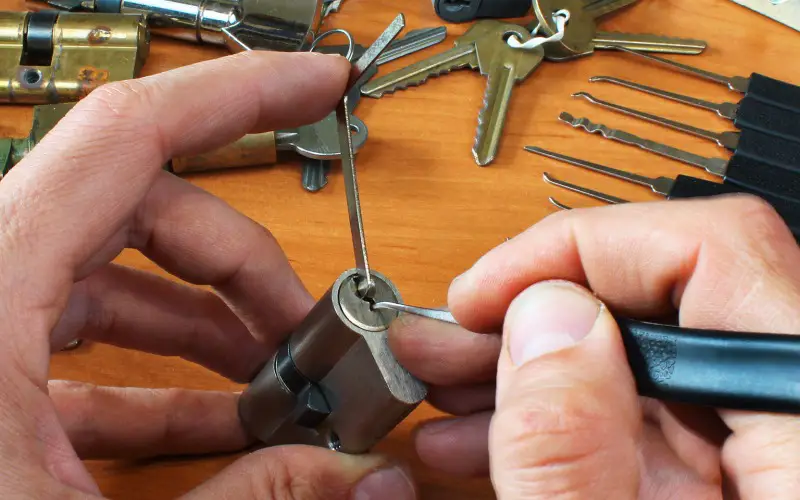
These tips have worked for us, and we constantly remind ourselves about them.
Cheat
You will experience a lot of frustration in lock picking, and you should expect it. However, there will be plenty of locks along your journey that will challenge you.
If you have the tools for it, we recommend gutting the lock and seeing what you are up against. This will give you a complete understanding of what pins you are working with and allow you to rethink your attack.
A glance at the key biting will also give you much information. This technique also saves you from having to gut the lock.
By understanding the biting, you will know how high to lift the pins.
Lock picking is challenging, but you will cheat less as your skills and confidence grow.
Know Thy Enemy
Understanding what you are going up against is critical in battle as it is in lock picking.
Doing some simple research will provide you with all the information you need. Many resources, such as forums and online videos, show picking and gutting on locks. Try and find the ones you are “working on”.
Learn these key elements about your locks:
- Keyway shape
- Number of pins
- Types of security pins
- Standard vs. security pin counts
Understanding what you are dealing with will save you a lot of headaches and frustration.
Be Present in What You Are Doing
Mindlessly trying to pick a lock won’t help you improve. Here is all you need to consider:
- Being focused on the lock
- Feeling how much tension you are applying
- Knowing which pin you are manipulating
- Can you detect the pin type?
Don’t Give up on a Practice Lock
For locks at or under your skill level, these are your practice locks; keep going.
You are welcome to take short breaks but don’t give up on a lock. This will help you avoid frustration and encourage you to make a second or third attempt.
Practice Locks
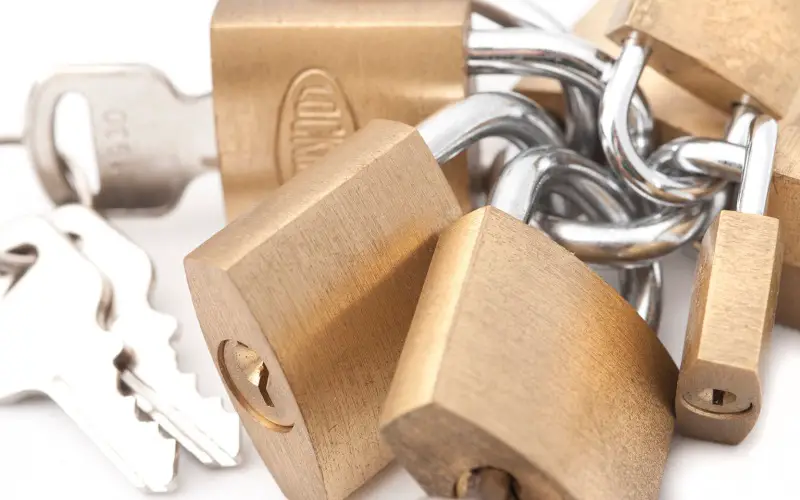
Check out our article on practice locks for a complete guide to practice locks.
Note: Keep pushing yourself with more challenging and complex locks to keep improving your skills. It will help if you keep challenging yourself with deliberate practice to improve your skills.
Lock Picking Practice FAQ
Is it easy to learn lock picking?
Yes, learning to pick a lock is easy. We recommend grabbing a tensioner and rake pick and a Master Lock No. 1. Following the techniques in this article, How Do Lock Picks Work, you’ll have that lock open in minutes.
Is lock picking a cheap hobby?
Lock picking can be a cheap hobby if you purchase a cheap Amazon lock picking set for less than $20 and your first lock for less than $10 each. Some lockpickers make their own tools from windshield wiper inserts and street sweeper broom bristles.
The hobby can get expensive when you start looking at buying high-security locks. These are high-quality products with finely machined parts, thus the much higher price tag.
However, you will have a blast with the lower security locks that are more budget-friendly.
Once committed to the hobby, you can invest in quality picks like those from Peterson or Sparrows.
Is picking locks a good skill?
Understanding how a lock works and what it takes to pick one up is a great skill! You may not be able to pick your way into your house, but you could quickly learn how to pick open a standard Master Lock in cases where you lost your keys.
What Lockpick should I buy first?
We recommend buying or making four (4) things: A short hook, a rake, a tension tool, and a cheap Master Lock No.1-8 or another lock of the white belt list.
Is lock picking legal?
Yes, lock picking is legal, with a few exceptions. Those exceptions are related to the intent of the person carrying the “burglary tools”. For more information on this topic, check out our article, Are Lock Picks Illegal?
Final Thoughts
Lock picking is an excellent hobby because there is always a new challenge; you just have to find it.
Continue picking, and you will quickly improve your skill and belt rankings with diligent practice.
If you found this article helpful, share it with a fellow lock-picking enthusiast!


